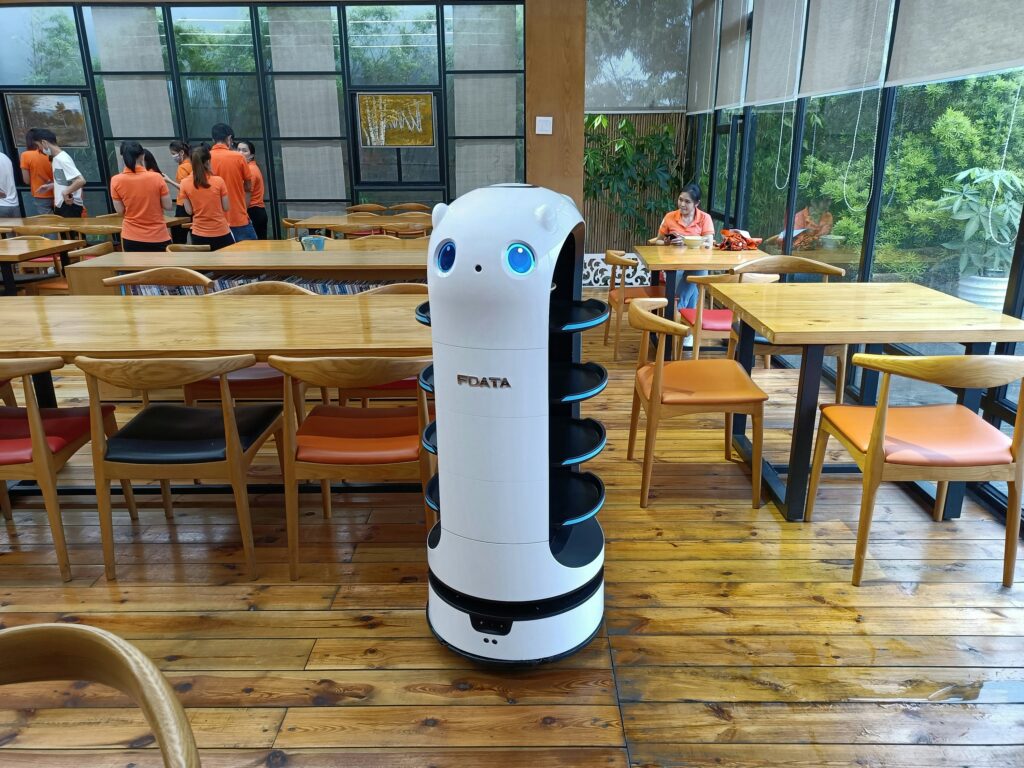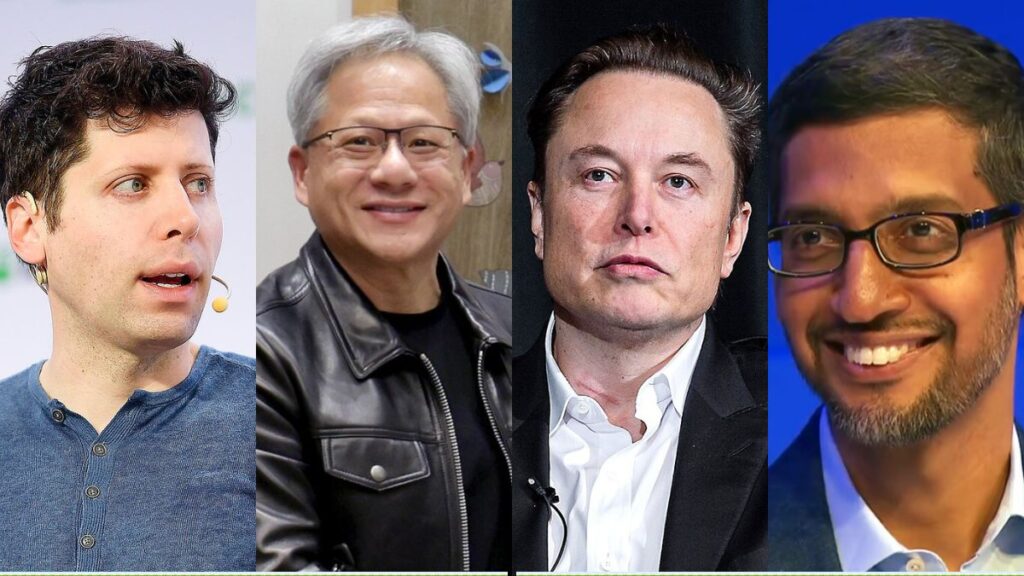Artificial Intelligence (AI) is shaping the way we work, learn, and live. From ChatGPT answering questions in seconds, to Google Maps predicting traffic routes, AI is no longer a futuristic idea—it’s the engine running our digital world.

But before moving into advanced AI and its technical terms, it’s better to first understand the basics — what AI actually is in simple terms, which you can find in our “Beginner’s Level Guide“. If you’re already familiar, let’s continue.
So, What is AI in technical terms? How does it work, and why are companies like OpenAI, Google, Microsoft, NVIDIA, and Meta investing billions into it? Let’s break it down in a way that’s technical but still simple to grasp.
What AI Really Means in Technical Terms
Artificial Intelligence (AI) isn’t just a buzzword—it’s a fascinating branch of computer science that’s all about teaching machines to think and act in ways that usually require human intelligence. Instead of simply following rigid rules, these systems—often called intelligent agents—can observe what’s happening around them, learn from data, make decisions, and even take actions to reach specific goals. In short, AI is about building machines that can perceive, reason, and act on their own, bringing us a step closer to technology that feels less like a tool and more like a partner.
According to Stuart Russell and Peter Norvig—yes, the same duo behind the famous textbook Artificial Intelligence: A Modern Approach—AI can actually be formally defined in a pretty clear way.
“The study of agents that receive percepts from the environment and perform actions.”
In simpler terms, an AI system:
- Perceives its environment – through data inputs, sensors, or other sources.
- Processes and learns from that information – finding patterns, updating its knowledge, and improving over time.
- Decides and acts – choosing actions that maximize desired outcomes or achieve specific goals.
Summing it up: AI = data + algorithms + computing power → intelligent decisions.
1. How AI Actually Works: Step-by-Step Process
Artificial Intelligence operates by learning patterns from data and making decisions based on those patterns. Unlike traditional software, which follows explicit instructions, AI improves its performance over time by analyzing new information. The process is systematic and can be divided into several key steps.
Step 1: Data Collection: AI Learns by Collecting Huge Amounts of Data
AI requires large volumes of data to learn effectively. This data can be in the form of text, images, videos, voice recordings, or numeric information. The more diverse and high-quality the data, the more accurate and reliable the AI system becomes.
Example: Google Maps collects GPS location data from millions of smartphones to analyze traffic patterns and suggest the fastest routes. Similarly, self-driving cars collect driving data from cameras, sensors, and lidar systems to understand real-world road conditions.
Step 2: Data Processing and Cleaning
Raw data is rarely perfect. It often contains errors, missing values, duplicates, or irrelevant information. Processing and cleaning ensure that the AI system only works with accurate and structured information. This step is essential for building trustworthy models.
Example: In healthcare, patient records are standardized and anonymized so AI systems can analyze symptoms or X-rays without errors caused by inconsistent formats or missing entries. In speech recognition, background noise is filtered out to improve accuracy.
Step 3: Model Training: Training AI Models to Recognize Patterns
In this phase, algorithms learn patterns from the cleaned data. The AI system adjusts its internal parameters repeatedly until it can make predictions or decisions with high accuracy. The larger the dataset and the more iterations, the smarter the model becomes.
Example: Netflix trains its recommendation engine on millions of user viewing histories to suggest movies and shows that each user is likely to enjoy. OpenAI’s GPT models are trained on billions of sentences to generate coherent and contextually accurate text.
Step 4: Testing and Validation: Testing AI to Make Sure It Works in Real Life
Before deployment, AI models are tested with unseen data to check performance and reliability. This ensures that the AI can generalize knowledge instead of merely memorizing training examples.
Example: Self-driving cars are tested in varied weather conditions, road types, and traffic scenarios to ensure safety and adaptability. Facial recognition AI is tested across different ethnicities and ages to reduce bias and errors.
Step 5: Deployment and Feedback: AI Gets Smarter After Real-World Use
After testing, the AI system is deployed in real-world applications. Continuous feedback from users and new data is used to retrain the model, improving its accuracy and responsiveness over time.
Example: ChatGPT learns from user interactions to improve its responses. Google Photos refines its object and face recognition features based on user feedback.
2. The Core Technologies That Power AI
AI is built on several core technologies, each serving a unique role in enabling intelligent behavior. Understanding these pillars helps explain why AI is so versatile.
1. Machine Learning (ML): How AI Learns from Data on Its Own
Machine Learning allows AI systems to learn patterns from data without explicit programming. It forms the foundation of most modern AI applications.
In practice, ML exists as software models running on servers, cloud platforms, or embedded chips. It collects data from many sources—such as clicks, purchases, GPS signals, images, or sensor readings—and organizes it into datasets that the system can learn from. For example, Amazon’s recommendation system doesn’t just “know” what you like; it continuously gathers data from your browsing history, purchase behavior, and even how long you hover over a product. This raw data is processed through ML models running on massive cloud servers, which then find patterns and predict what you’re most likely to buy.
More Example: Spotify uses ML to collect your listening history, skips, and playlist choices to recommend music that matches your preferences.
2. Deep Learning (DL): Why Neural Networks Make AI So Powerful
Deep Learning is a subset of ML that uses multi-layered neural networks to handle highly complex data, such as images, text, and speech. These networks mimic the way human brains process information.
Think of ML as the “collector and organizer” of raw data, while DL is the “analyzer” that digs deeper. For example, in self-driving cars like Tesla, ML first gathers input from cameras, radar, and lidar sensors—essentially devices that “see” the environment. This data is then fed into deep learning models running on specialized AI chips (like NVIDIA GPUs or Tesla’s custom AI processors), which analyze it in real time to recognize pedestrians, road signs, and other vehicles. Similarly, Apple’s Face ID works because ML collects millions of pixel patterns from your face, while deep learning interprets those patterns at a deeper level—ensuring it’s really you, even if lighting or angles change.
More Example: Google Photos applies deep learning to analyze uploaded pictures, automatically recognizing people, objects, and even grouping events like birthdays or vacations. And as we talked about above with Tesla, another example is Waymo’s self-driving cars, which also use deep learning to not just detect traffic and pedestrians but to predict how they might move—helping the car make safer driving decisions.
3. Natural Language Processing (NLP): How AI Understands and Talks Like Humans
NLP enables machines to understand, interpret, and generate human language. It is critical for chatbots, virtual assistants, and language translation.
At its core, NLP works through algorithms that run on specialized processors—most often GPUs and TPUs inside servers or embedded chips in smartphones and smart devices. It exists in the form of software models (like large language models) that rely on ML to collect and preprocess text data, and then use DL neural networks to analyze sentence structures, meanings, and context. This is why tools like Siri, Alexa, or Google Translate can listen to your words, convert them into data, process that data through ML and DL pipelines, and finally respond in a way that feels natural.
Example: ChatGPT uses NLP to understand user prompts, process context through deep learning models, and generate human-like text responses. Similarly, Google Translate applies NLP to analyze the structure and meaning of one language and accurately translate it into another in real time.
4. Computer Vision (CV): How AI Can See and Recognize Images
Computer Vision allows AI to “see” and analyze images or videos. It’s used in fields ranging from healthcare to security to autonomous vehicles.
Behind the scenes, CV works through cameras, sensors, and image-processing chips that capture visual data. This data is then processed using algorithms like image classification, object detection, and pattern recognition. Devices such as smartphone cameras, medical scanners (X-rays, MRIs), surveillance systems, and even self-driving car cameras provide the raw input, while GPUs and specialized processors handle the heavy computation.
Example: Medical AI uses computer vision to detect tumors in X-rays and MRIs. Security cameras employ AI to identify suspicious activity in real-time.
5. Robotics: When AI Controls Machines and Robots
Robotics combines sensors, cameras, actuators (motors, joints, wheels), and controllers with AI software. Sensors give robots a sense of their environment (distance, movement, touch), while actuators turn AI decisions into physical action. AI algorithms guide path planning, object manipulation, and adaptive responses, while onboard computers or cloud systems process the data. This integration is what allows robots to not just move, but think about how to move.
Example: Boston Dynamics’ robots navigate uneven terrain and perform complex tasks like lifting objects. Industrial robots in factories use AI to sort and assemble products efficiently.

The Biggest Companies and Tools Behind AI Today
AI is not just research—it’s industry-defining. Some of the leading organizations shaping AI in 2025 are:
- OpenAI → ChatGPT, DALL·E, Codex; pioneers of GPT models.
- Google DeepMind & Google AI → AlphaGo, AlphaFold, BERT; leaders in deep learning.
- Microsoft → AI Copilot in Office, Azure AI services, investment in OpenAI.
- NVIDIA → GPUs and AI chips powering nearly all training models.
- Meta AI (Facebook) → LLaMA models, computer vision research.
- Amazon AWS AI → Alexa, AI APIs for businesses.
- IBM Watson → AI in healthcare, finance, enterprise services.
- Hugging Face → Open-source AI model hub used by developers worldwide.
3. Where You See AI in Everyday Life
AI is no longer just a research concept—it is embedded in everyday life and across industries. Its applications are vast and growing.
Healthcare: AI Helping Doctors Diagnose and Treat Patients
AI assists in diagnostics, treatment planning, and drug discovery, improving outcomes and efficiency.
Example: IBM Watson analyzes medical literature and patient data to suggest personalized cancer treatments faster than traditional methods. DeepMind’s AI detects eye diseases from retinal scans with accuracy surpassing human specialists.
Finance: AI Making Banking Safer and Smarter
AI monitors transactions, detects fraud, and helps manage investments automatically.
Example: JPMorgan Chase uses AI algorithms to review financial contracts and detect risks. PayPal employs AI to flag suspicious activity in real time.
Transportation: AI Powering Self-Driving Cars and Smart Traffic
Self-driving cars, smart traffic management, and route optimization rely heavily on AI.
Example: Tesla’s Autopilot system combines deep learning and computer vision to navigate streets safely. AI also helps delivery companies like UPS optimize routes to save time and fuel.
Education: AI Personalizing How Students Learn
AI provides personalized learning experiences and adaptive feedback for students.
Example: Platforms like Coursera and Khan Academy use AI to recommend learning paths based on a student’s progress and performance. Khanmigo (powered by GPT-4) serves as a virtual tutor to guide learners.
Content and Entertainment: AI Creating Movies, Music, and Recommendations
AI personalizes content recommendations, creates media, and enhances user engagement.
Example: Netflix suggests shows based on viewing patterns. DALL·E and MidJourney generate realistic images from text prompts, while ChatGPT creates written content for blogs and articles.
Customer Service: AI Chatbots and Virtual Assistants in Action
AI chatbots and virtual assistants reduce response times and improve customer satisfaction.
Example: Bank of America’s “Erica” handles millions of inquiries daily, resolving simple tasks without human agents.
Why AI Is Exploding Right Now (And Not Before)
Artificial Intelligence isn’t new — it has been studied since the 1950s. What makes it ubiquitous today are three major shifts: Big Data, Hardware Acceleration, and Transformer Models. These factors together have allowed AI to grow faster, smarter, and more impactful than ever.
1. Big Data → Massive Data Is the Fuel Driving AI
- AI systems learn by analyzing patterns in data.
- The explosion of the internet, social media, e-commerce, and IoT devices now generates massive volumes of data every second.
- More data means AI can make more accurate predictions, better recommendations, and smarter decisions.
Examples:
- OpenAI GPT models were trained on billions of documents, articles, and web pages.
- Tesla Autopilot collects terabytes of driving data to continuously improve self-driving capabilities.
2. Hardware Acceleration → GPUs and TPUs Make AI Super-Fast
- Traditional CPUs couldn’t handle the huge calculations AI requires.
- GPUs (Graphics Processing Units) and TPUs (Tensor Processing Units) allow thousands of operations at once, making AI training faster and more efficient.
- Hardware breakthroughs made large-scale AI models feasible, which was impossible a decade ago.
Examples:
- Training GPT-4 without GPU/TPU clusters would take years; with them, it takes weeks.
- Autonomous vehicles process real-time sensor data in milliseconds, enabling instant decision-making on roads.
3. Transformer Models → Revolutionizing AI Understanding
- Transformers allow AI to understand context, relationships, and meaning in data, especially text.
- Before transformers, AI struggled with long texts or nuanced language. Transformers fixed that.
- Models like GPT (OpenAI), BERT (Google), and LLaMA (Meta) can summarize, translate, generate, and even reason.
Examples:
- ChatGPT generates essays, code, and answers complex questions.
- Google Search uses BERT to understand search queries better, delivering more relevant results.
The Future of AI: What It Means for You
Artificial Intelligence is not one single technology—it’s a stack of data, algorithms, and computing power shaping the tools we use daily. From Google Search to ChatGPT, from Tesla cars to Netflix recommendations, AI is already embedded in our lives. And the companies building it—OpenAI, Google, Microsoft, NVIDIA, Meta, Amazon, IBM—aren’t just making products. They are defining how humans and machines will work together in the coming decades.
Key Takeaway:
If you remember one thing: AI = machines that perceive, learn, and act using data + algorithms.
Understanding this technical foundation means you already know more than most people searching “What is Artificial Intelligence?” today.
What is AI? — A Beginner’s Guide
What is AI? — Types, Classifications & Real-World Examples

